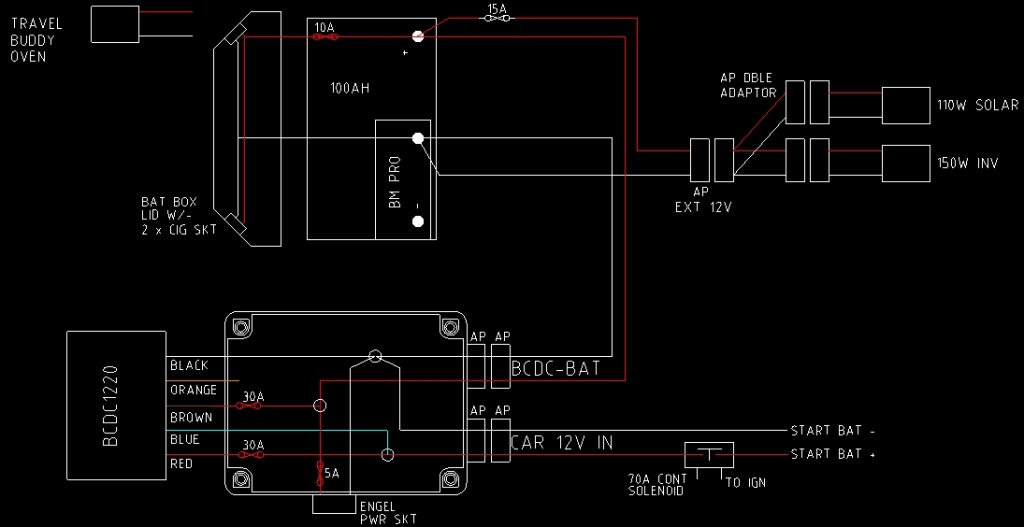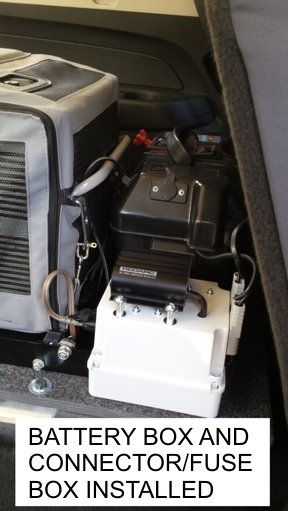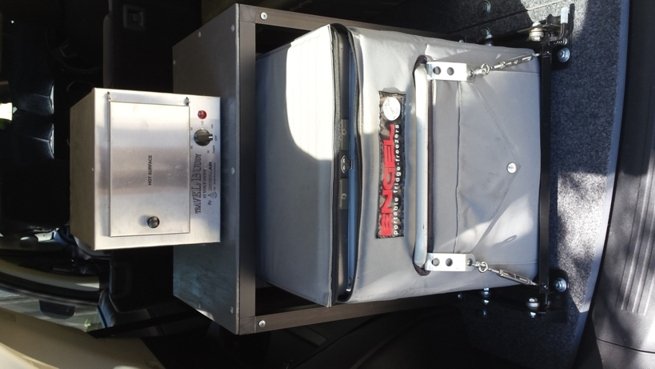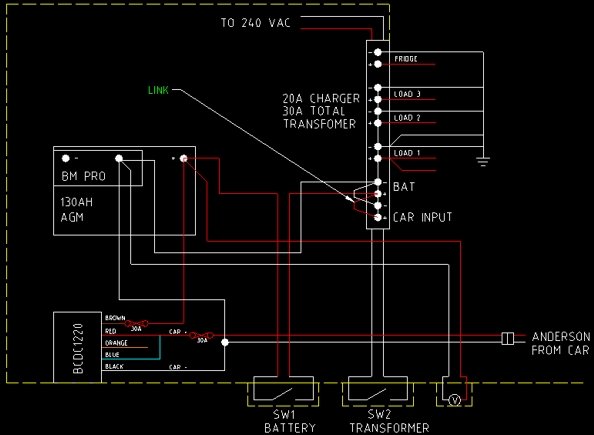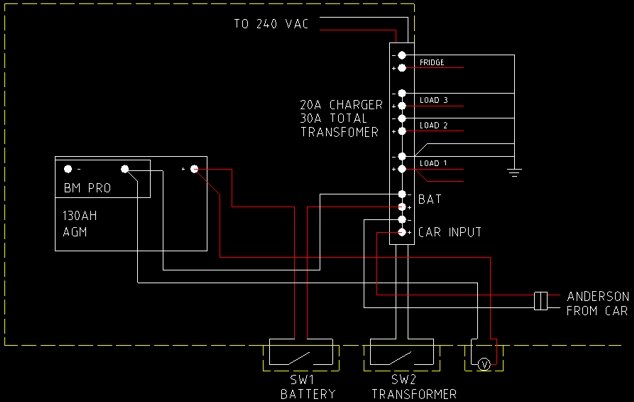condor22
Mike
I covered this several pages ago, but I'll do it again.
If you use 1,000 W @ 240 VAC = 4.17 amps, however you will also use 1,000 W when drawing that from a 12 VDC source so the math is 1,000 divided by 12 = 83.3 amps.
An inverter is not efficient and actually uses about 10% more power than it produces, so you are now around 90 amps.
Most use the 20 hour rate of the battery bank and most good batteries have that stamped on them.
Example - If you have a 100AH battery divided by 20 then the max constant load should be 5 amps. Any higher and you reduce the battery life and the higher you go the more you reduce that life.
To extrapolate - if you have 3 x 100 AH batteries the 20 hour rate would be 15 amps and so on.
I'll reiterate my process and gear - Battery = 1 x 120 AGM (the caravan is a 18' shower van, all LED lights inside, 12 VDC TV, 12VDC diesel heater, 3 burner gas stove + 1 electric and gas grill, duel 240VAC and LPG hot water service, 1,000W microwave, duel USB 5VDC chargers, 12VDC fan in shower, 12VDC range hood, 12VDC water pump.
I also have a 240VAC PVR @ 15W and a VAST satellite system at 60W.
Example when I go detecting and off grid - Fridge is on LPG. Get up have brekky, water boiled on LPG stove and dishes left in a bowl of shallow water, solar panels are ON. Go detecting.
On return to van, I switch the genny on to heat the hot water and plug in my detector battery, phone, laptop etc on 240VAC and grab a beer. Then cook tea usually on the microwave, occasionally on stove using gas. Do the whole days dishes and whilst doing this the water is used is replaced and reheated. Have a shower. I then turn the genny off and use battery power.
As I detect the GT in VIC I don't need satellite, so with TV and 1 0r 2 LED lights and after initial startup the diesel heater all together pull between 4-5 amps. The 20 hour rate of my 120 AH AGM is 6 amps, so I'm well within limit. Of course if I use the water pump etc it can go over 10 amps, but that's only a few minutes and the actual AH used is well < 1.0.
I can also top up my detector battery on the way to my detecting area, lunchtime and on the way back to the van. Either by 12VDC charging or from another 150W inverter on 240VAC.
You don't need a huge system to provide constant power, it's all a matter of using what you have wisely and using good gear that reduces the risk of failing.
PS Although not installed yet as I've just changed vehicles, I have a 100AH Auxiliary battery in the 4x4 to power the Engel, 12VDC oven, lights, chargers and inverter etc.
And, like my last 4x4 the Aux will be in the rear not under the hood.
If you use 1,000 W @ 240 VAC = 4.17 amps, however you will also use 1,000 W when drawing that from a 12 VDC source so the math is 1,000 divided by 12 = 83.3 amps.
An inverter is not efficient and actually uses about 10% more power than it produces, so you are now around 90 amps.
Most use the 20 hour rate of the battery bank and most good batteries have that stamped on them.
Example - If you have a 100AH battery divided by 20 then the max constant load should be 5 amps. Any higher and you reduce the battery life and the higher you go the more you reduce that life.
To extrapolate - if you have 3 x 100 AH batteries the 20 hour rate would be 15 amps and so on.
I'll reiterate my process and gear - Battery = 1 x 120 AGM (the caravan is a 18' shower van, all LED lights inside, 12 VDC TV, 12VDC diesel heater, 3 burner gas stove + 1 electric and gas grill, duel 240VAC and LPG hot water service, 1,000W microwave, duel USB 5VDC chargers, 12VDC fan in shower, 12VDC range hood, 12VDC water pump.
I also have a 240VAC PVR @ 15W and a VAST satellite system at 60W.
Example when I go detecting and off grid - Fridge is on LPG. Get up have brekky, water boiled on LPG stove and dishes left in a bowl of shallow water, solar panels are ON. Go detecting.
On return to van, I switch the genny on to heat the hot water and plug in my detector battery, phone, laptop etc on 240VAC and grab a beer. Then cook tea usually on the microwave, occasionally on stove using gas. Do the whole days dishes and whilst doing this the water is used is replaced and reheated. Have a shower. I then turn the genny off and use battery power.
As I detect the GT in VIC I don't need satellite, so with TV and 1 0r 2 LED lights and after initial startup the diesel heater all together pull between 4-5 amps. The 20 hour rate of my 120 AH AGM is 6 amps, so I'm well within limit. Of course if I use the water pump etc it can go over 10 amps, but that's only a few minutes and the actual AH used is well < 1.0.
I can also top up my detector battery on the way to my detecting area, lunchtime and on the way back to the van. Either by 12VDC charging or from another 150W inverter on 240VAC.
You don't need a huge system to provide constant power, it's all a matter of using what you have wisely and using good gear that reduces the risk of failing.
PS Although not installed yet as I've just changed vehicles, I have a 100AH Auxiliary battery in the 4x4 to power the Engel, 12VDC oven, lights, chargers and inverter etc.
And, like my last 4x4 the Aux will be in the rear not under the hood.




